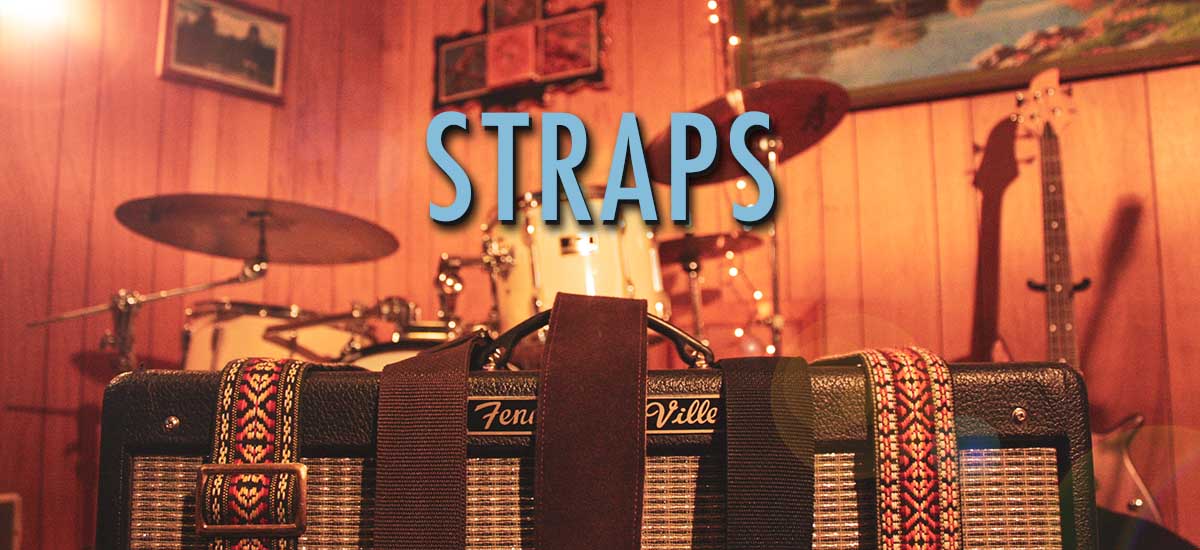The guitar strap is one of the most customizable and recognizable guitar accessories. After you buy a guitar, you may not be able to change the color or finish, but a well paired strap can accentuate, or regulate the overall look and feel. Whether it’s a well crafted leather strap, or a plain black nylon one, finding the right strap is important.
My favorite guitar straps come from Levy’s. They make some very nice leather straps, sueded straps, hootenanny style straps, and anything else you might want. I find that their quality is consistent and very good while having some of the cooler designs out there.
They’re quite affordable too. You can pick up one of these straps for around $30. Which makes it an awesome gift, or add-on to a first guitar.
Here are a couple of my favorite straps from Levy’s


Types of straps
Materials
There are a couple main types of straps that you’ll find. Leather, and cotton or polyester. All material types go well with almost all guitar types, so there really isn’t a set rule here.
Typically, leather straps are going to be more expensive, and are sometimes thicker. I personally like to use a leather strap for my acoustic, and heavy semi-hollow body while using polyester straps for my Strat and Tele. This is pure personal preference, but the wider sueded leather strap is a real back saver when playing the semi-hollow for long periods of time.
Often times bass players will use thicker straps to save their backs from the heavy weight of the bass. And if you look up bass specific straps, they will always be thicker.
Instruments
When buying a strap for guitar, make sure that it explicitly says “guitar strap” on it. If you’re buying it from a guitar shop, make sure that you’re getting a guitar strap as they are typically placed right next to the rest of their straps. Straps for banjo, mandolin, ukulele, even classical guitar are all different and you don’t want to pick up the wrong one.
Below is an example of a guitar and banjo strap end. See those hooks on the banjo strap? They work great for a banjo… not so much for a guitar.
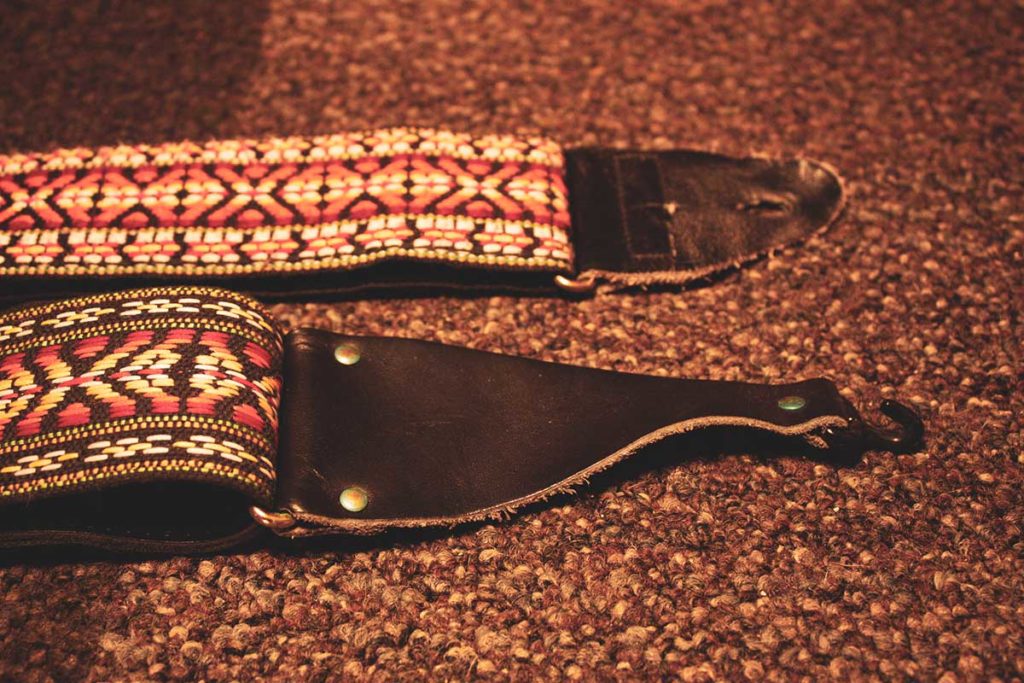
Have you ever seen a true classical guitar strap? Classical guitars traditionally didn’t have strap buttons on them, so they are held up with something that looks very similar to a saxophone strap. It is put around the neck, and then secured to the bottom edge of the soundhole and runs underneath the guitar and then behind it.
How to attach a guitar strap to an acoustic guitar
Guitars have things called strap buttons on them to attach a strap. There is almost always one on the very bottom of the guitar, farthest from the headstock. This is securely screwed into the tailblock which provides a very strong mount. If the guitar has another strap button near or on the heel of the neck, then you’re good to strap it up and let ‘er rip.
However, a lot of acoustic guitars don’t have that strap button there. In that case, a string is used to tie the end of the strap to the neck of the guitar just on the other side (tuner side) of the nut. This is an OK place to attach the strap, and may be the only option. However, a competent guitar tech, guitar shop, or repair shop can place another strap button quickly and cheaply. Here is a great article from Stew Mac on placement of a strap button.
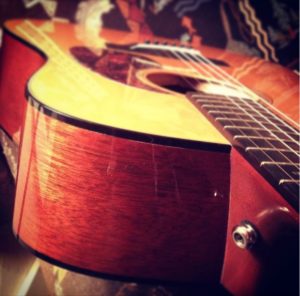
I have installed many strap buttons on all types of guitars, and if you have this done I highly recommend placement #5 in the photo on that StewMac page. Check out guitar below. This is my Martin D-18V that I love dearly. The guitar now sits much more naturally on the body, and gives easy access to the whole neck. In my opinion, this is completely worth it. So much so that I was willing to drill into my baby.
Which direction does the strap go?
This may seem like a dumb question, but I promise you it is not. There are a couple different ways (and by a couple I mean two) to place a strap on a guitar. Adjustable side towards the fretting hand, or adjustable side towards the strumming hand.
And… I actually do this in two different ways. On my electric guitars using thinner traditional straps, I put the adjustable side towards my fretting hand. On the guitars that I use my thicker suede strap, I put the adjustable end towards the back, and my strumming hand.
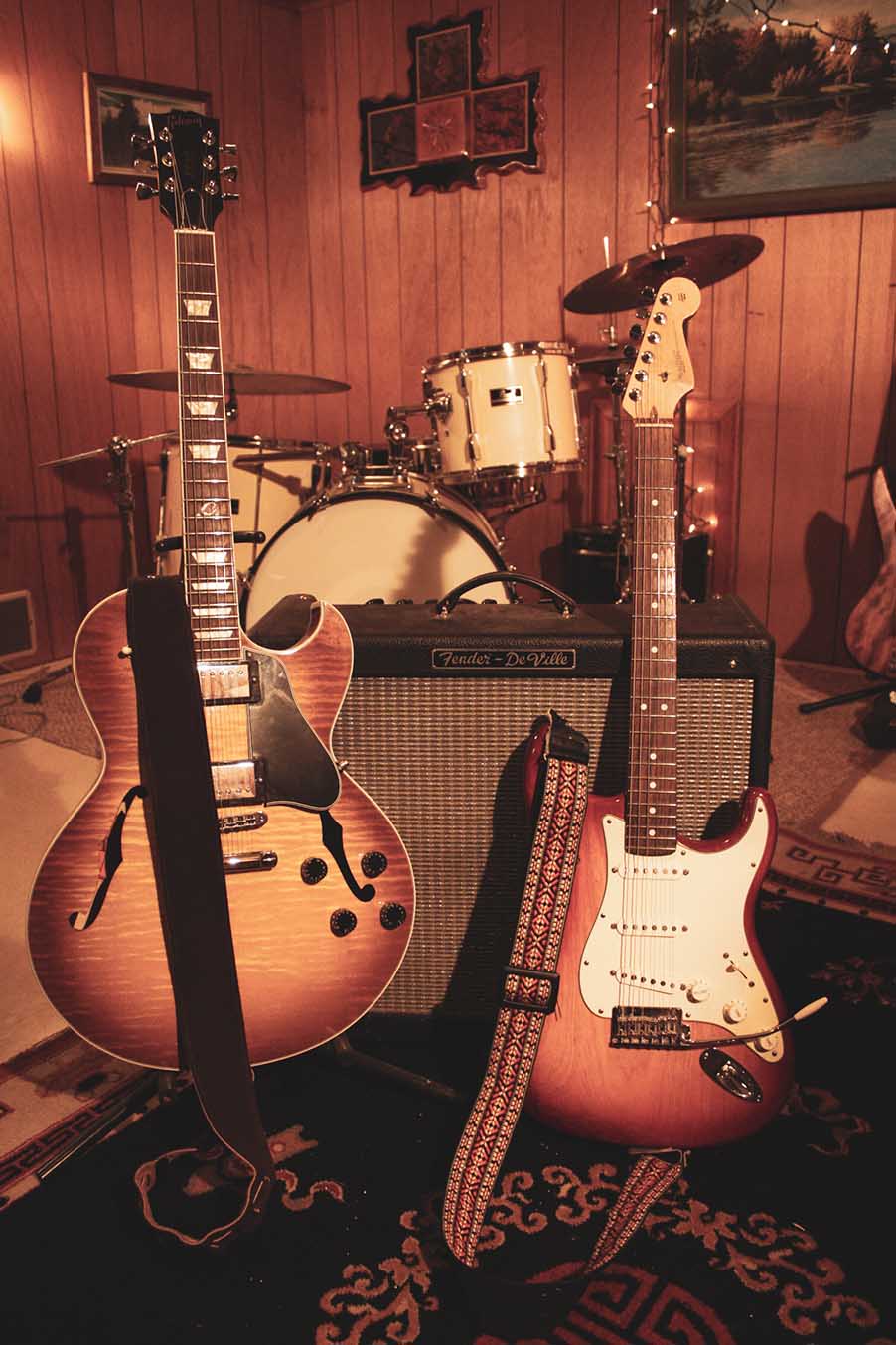
There isn’t a correct way to do this here, but personally I like the look of each of these. There is equal weight on the strap in either configuration, so which way you place it really doesn’t matter. It all comes down to preference and what you think feels good and looks good.
How High Should the Guitar Sit?
How high or low should the guitar sit with the strap on? For both acoustic and electric guitars, the answer is the same. It has to be at a height that you can comfortably and quickly reach all of the frets.
Typically people starting out will sling their guitar too low. I know it looks a little nerdy to bring it up high, but it will be so much easier to play, and you’ll be able to master some of that epic technique that you can manage so flawlessly while sitting down.

Here’s a picture of Tom Morello, incredible guitar player for Rage Against the Machine. Now, you don’t have to play with the guitar that high, but it does allow for easy access to the neck. And no one can argue that Tom isn’t an incredible guitar player.
If your wrist is hurting at all because of the angle you have to bend it to play… raise up your guitar, it’ll feel much better and make you a better player instantly.
And while I do think that a low slung guitar looks pretty silly, I’m not about to criticize the formidable Jimmy Page.
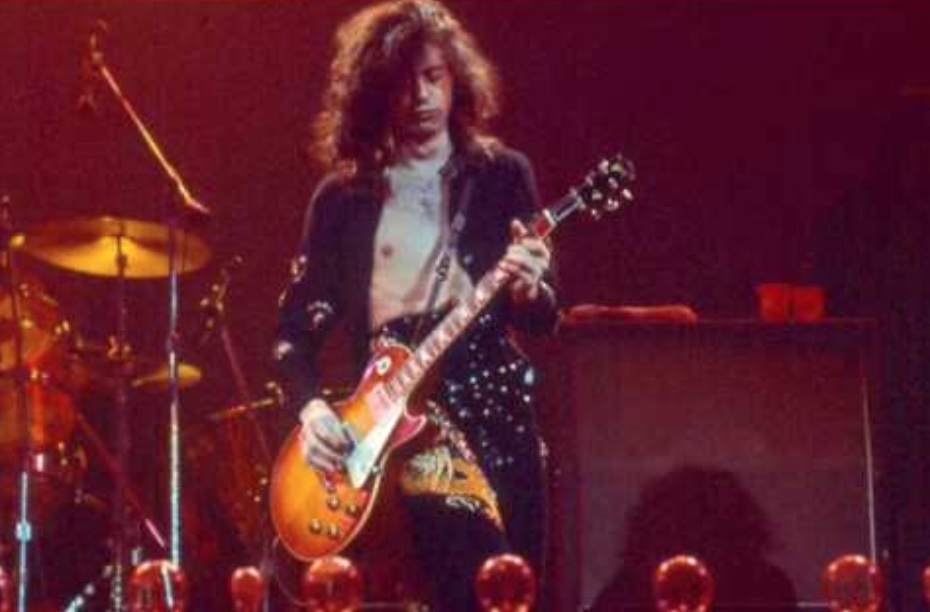
How to put a guitar on with a strap
One last note about playing guitar standing up with a strap. Again, this may seem like a dumb thing to say, but I promise you it is not.
One time I was distracted on stage before a sound check. I threw my guitar on, but I didn’t check that the strumming end of the strap wasn’t flipped over. It was, and as soon as I stopped supporting the guitar’s weight, my beloved strat slipped right off the end of the strap and fell straight to the floor.
It crashed hard and the end of the tremolo arm took the brunt of the hit. Thankfully I was able to bend it back into shape and all was good. But things could have been much worse, and many a neck is broken this way. Please, make this a habit whenever you are putting your guitar on over your neck. Just follow these steps:
- Put the strap over your neck with your strumming hand while supporting the guitar by the neck with your fretting hand.
- While still holding the weight of the guitar, check the end of the strap that attaches to the tail strap button of the guitar.
- Your check to make sure that the strap is not flipped over, which would allow for the strap button to slip right through the strap hole.
- Slowly let the guitar weight down onto the strap.
Or Just Get Strap Locks
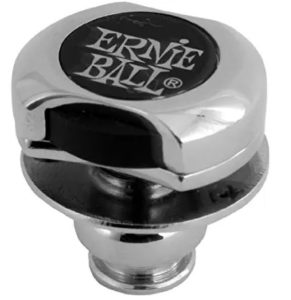
If you move around very much while you’re playing, a good option are strap locks. These are mechanisms with a nut that you tighten down hard on your strap. Those then clip into the receiver that is bolted onto the guitar and has been installed in place of the traditional strap buttons.
I really like the Ernie Ball Super Locks, and the Schaller Strap Locks if you’re looking for something that’s a little lower profile.
If you’re installing these yourself, make sure that the replacement screws are the same size. If the existing hole is too big, it needs to be plugged or shimmed and re-drilled. If the hole is too small it needs to be drilled further, which can be a tad bit tricky.
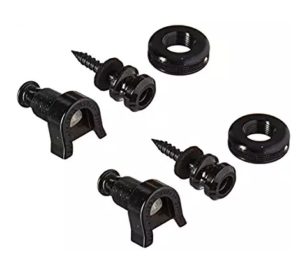
If you’re doing any drilling around guitar finish, especially the modern polyurethane finishes of many guitars today, be extra careful not to chip it out. Tape the area your working on with painters tape, and go slowly!
If you’re at all hesitant to do this, take it to a competent guitar tech. It will not cost very much, and having a quality hand do the work will be worth it.
Whatever you do, do not get the cheap plastic strap locks or rubber protectors that just fit over the existing strap buttons. These will certainly let you down and you’ll be wishing you had spent a little more for the good ones.
Ok, now stop reading about straps and go pick up that guitar!
